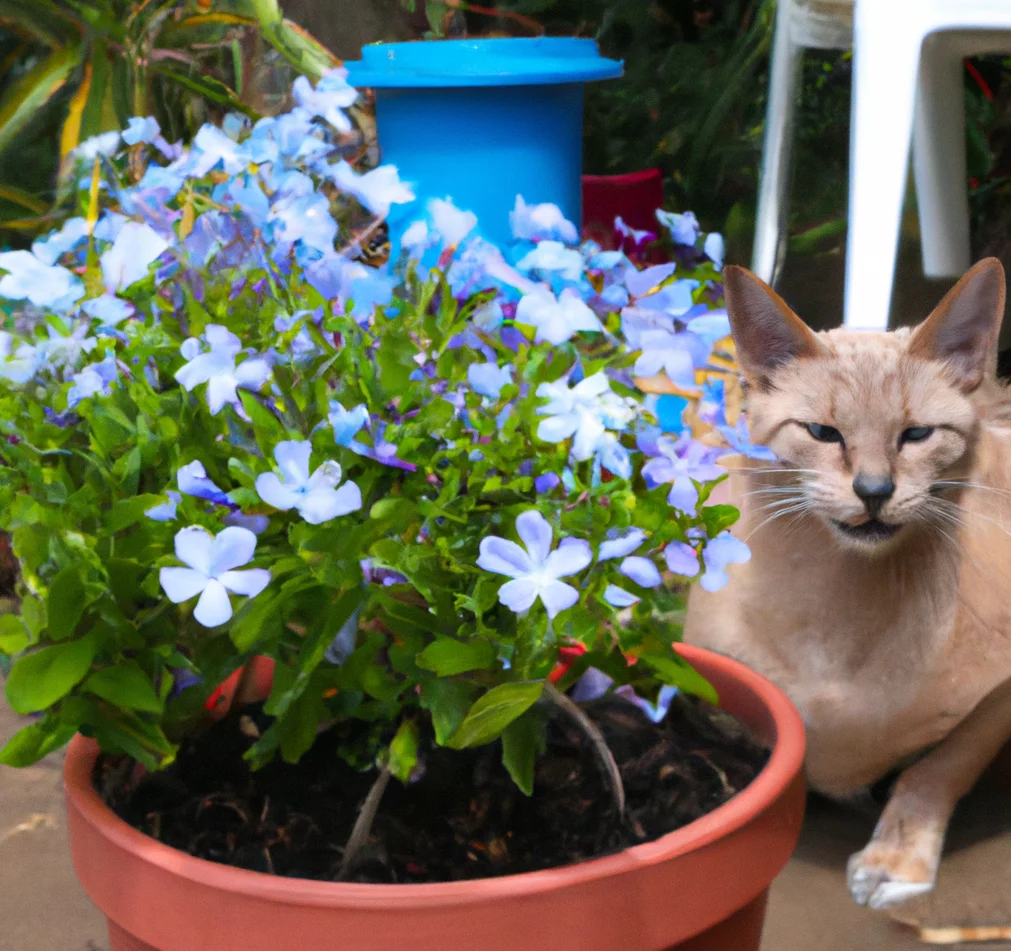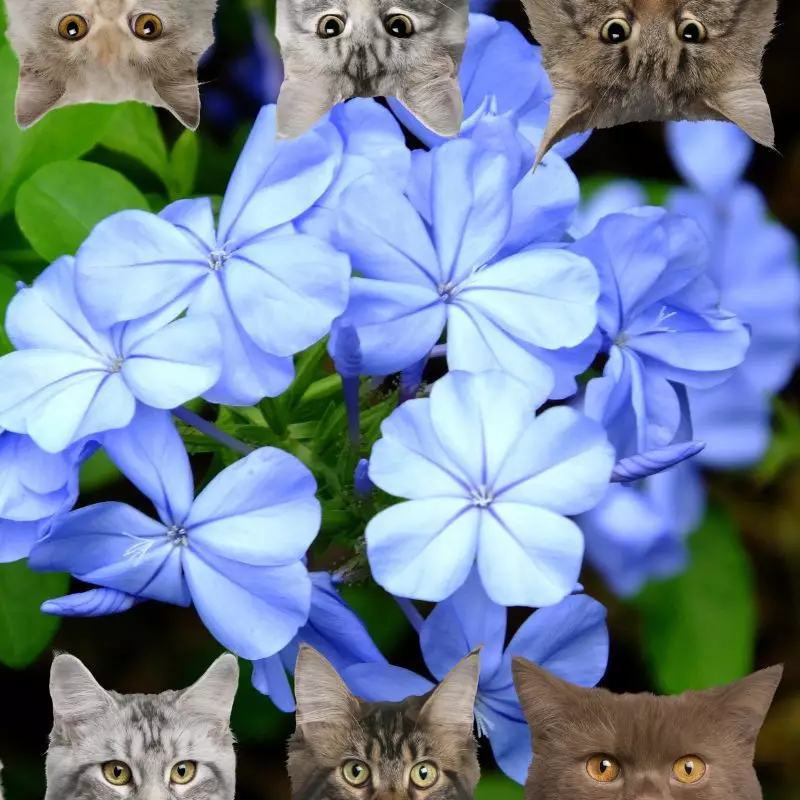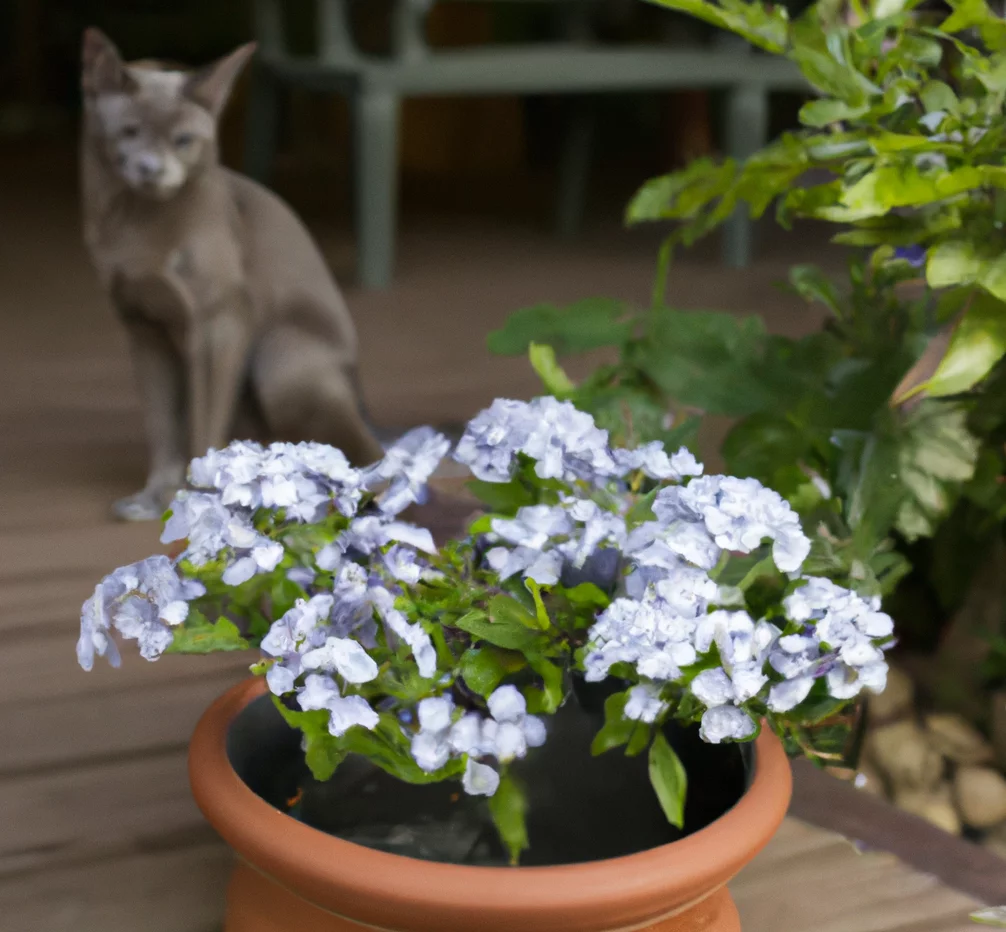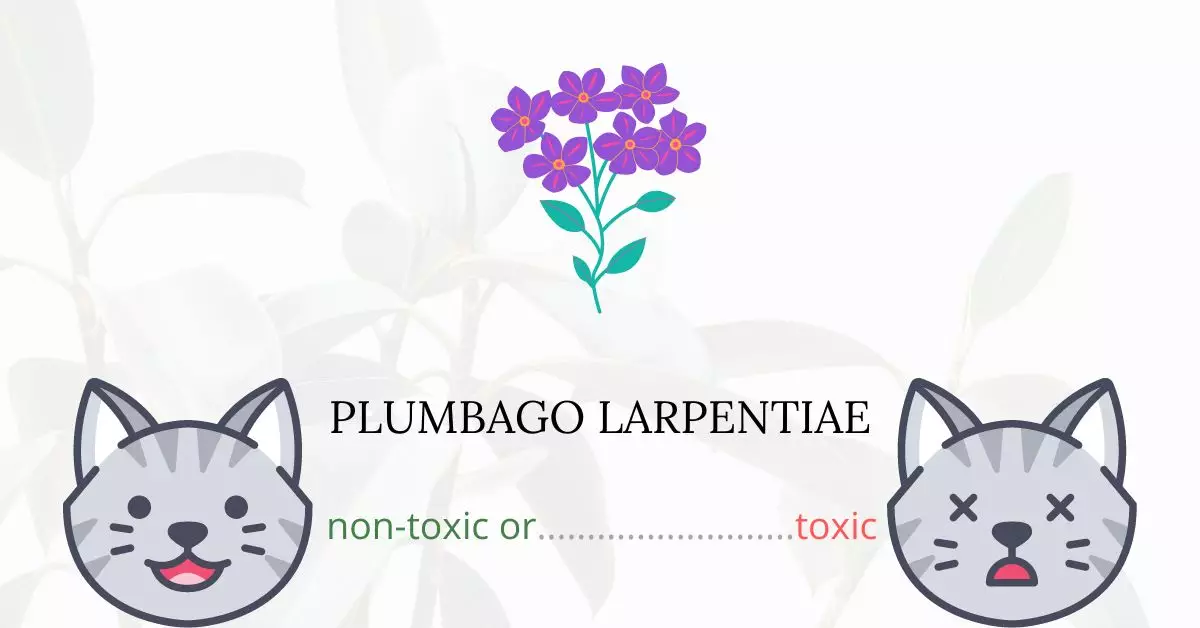Plumbago Larpentiae is not considered toxic to cats according to the American Society for the Prevention of Cruelty to Animals (ASPCA).
This article has been crafted in collaboration with a team of experienced DVMs (doctors of veterinary medicine). With their insights and expertise, we ensure that the information provided here is both accurate and up-to-date regarding the potential risks associated with various plants, with a focus on Plumbago Larpentiae in this context. Moreover, to ensure thoroughness and reliability, we have cross-referenced our data with high-authority websites such as ASPCA and PetMD.
Plumbago is an exceptionally beautiful, colorful evergreen shrub that is commonly found in yards, lawns, and various outdoor settings.
Can Cats Eat Plumbago Larpentiae?

Generally speaking, Plumbago Larpentiae has been proven to be safe. This is fine for your cat to eat in little amounts. However, bear in mind that any plant that is consumed by a specific animal can result in vomiting, diarrhea, or gastrointestinal distress. Every cat is different, therefore elements like the quantity eaten and any potential allergies should be taken into account.
What is Plumbago Larpentiae?

The low-growing herbaceous perennial Plumbago Larpentiae (Ceratostigma larpentiae) has spreading roots that develop a mat of stems with oval leaves that turn crimson or purple in the fall. Late summer brings forth clusters of deep blue blooms. Dwarf Plumbago and Leadwort are some of its alternate names.
Rhizomes are how it spreads, yet it is not invasive. In good garden soils, it spreads moderately. Plumbago is a hardy, low-maintenance plant that doesn’t need to be sheared or pruned. Because the flowers self-clean, there is no need to deadhead them. The leaves of this plant maintain their fresh appearance throughout the summer, despite the heat and humidity. The leaves then become a deep burnished crimson color in the autumn when the weather starts to cool.
Keeping Cats Away From Plumbago Larpentiae

We’ve discovered that covering the dirt with chicken wire, plastic fencing, or even bird netting prevents him from digging because freshly dug soil is quite alluring as a litter box. He won’t even attempt to cross it. It is simpler to just cut the wire to create larger holes for the plants before planting. Mulch can be used to cover it to improve its appearance.
Try distributing pinecones, brush, or twigs over the soil’s surface because cats don’t like to walk on rough or prickly surfaces. Wear gloves because thorny trimmings from raspberries, holly, or roses are particularly effective but will also stab you. They find it difficult to dig in rough mulches like coarse wood chips or stones.
You can grow cat-repelling plants like rosemary, lemon thyme, rue, lavender, or Russian sage instead of preparing sprays. Alternatively, you might scatter these plants’ dried leaves about the areas you want to keep safe. They may also be discouraged by plants with thorny leaves, such as sea holly and globe thistle.
Plants to Avoid For Your Cats
If you are a cat owner and unsure if the plants growing in your yard are harmful to your cats, check out this list of toxic plants for cats. You can also check our list of non-toxic plants for cats.





